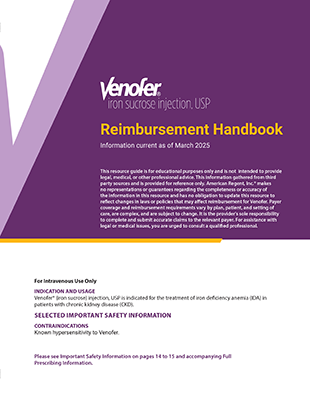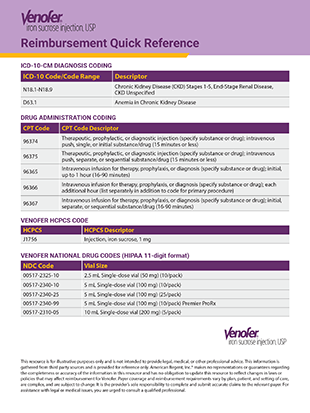A service to help providers understand payers’ coverage and reimbursement policies for Venofer.
877-448-4766
Monday through Friday, from 8 am to 7 pm ET
AR Assist is a service to help providers understand payers’ coverage and reimbursement policies for Venofer
Our team of specialists can provide the following coverage and reimbursement support services:
Benefits
Verifications
AR Assist reimbursement specialists help physicians and other providers understand payers’ coverage and reimbursement policies for Venofer, including insurance benefit verification.
Claims
Appeals
AR Assist reimbursement specialists support providers in appealing denied claims or inadequate reimbursement for Venofer. AR Assist specialists help track claims through the process, including follow-up with payers to help navigate the complex process. If a claim is denied, our staff is here to help.
Prior Authorization
Support
AR Assist reimbursement specialists can help physicians and providers through the process of seeking pre-certifications and pre-authorizations for Venofer.
To get started with a program, visit portal.ar-assist.com to enroll online.
Need general information about coding and reimbursement for Venofer?
These guides provide general coverage, coding, and updated payment information about Venofer to help you better understand the policies of the Medicare program and other third-party payers. The goal is to help you get paid fairly for every claim.

Venofer Reimbursement Handbook
This guide provides helpful information about general coverage, coding, and reimbursement to help providers understand the policies of the Medicare program and other third-party payers.

Venofer Reimbursement Quick Resource
A handy quick guide that provides specific coding for diagnosis and administration as well as HCPCS and NDC codes for Venofer.
HCPCS=Healthcare Common Procedure Coding System; NDC=National Drug Code.
Venofer® and the Venofer logo are registered trademarks of Vifor (International) Inc., Switzerland.
American Regent, the American Regent logo, AR Assist and the AR Assist logo are registered trademarks of American Regent, Inc. All rights reserved.
Venofer® is manufactured under license from Vifor (International) Inc., Switzerland.
PP-VE-US-0137 (v2.0)